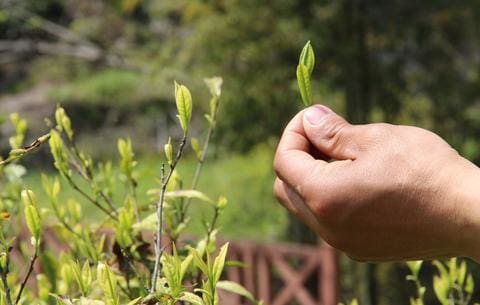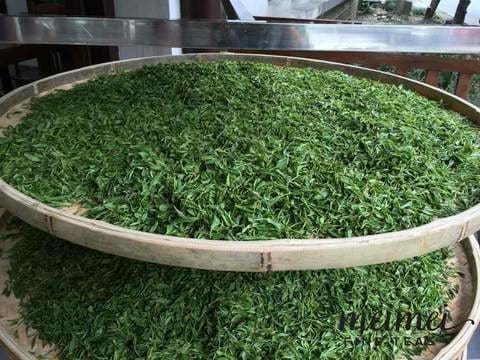In the northwestern region of Zhejiang Province of China lies Anji County, home to Anji Bai Cha, one of the most sought-after teas in the world. This tea, however, is also a source of a great deal of confusion. In Chinese, bai cha literally means white tea, which leads some people to wonder whether Anji Bai Cha is really a green tea or a white tea. Do you know the answer?
region of Zhejiang Province of China lies Anji County, home to Anji Bai Cha, one of the most sought-after teas in the world. This tea, however, is also a source of a great deal of confusion. In Chinese, bai cha literally means white tea, which leads some people to wonder whether Anji Bai Cha is really a green tea or a white tea. Do you know the answer?
Around the turn of the 11th century, the eighth emperor of the Song Dynasty, Hui Zhong, composed the Da Guan Cha Lun, or the Treatise on Tea. Hui Zhong was widely considered to be a very serious connoisseur of tea, and his work is a testament to this, meticulously detailing origins, climates, processing methods, tasting criteria, and more. Interestingly enough, however, he had dedicated an entire chapter to just one type of tea, which he described as his favorite: Bai Cha.
It should have been a fairly straightforward matter for modern eyes which tea he had taken the time to describe in his book, and yet for a long time, nobody could figure it out, assigning it to legend or perhaps some varietal that had disappeared. This was complicated further by the fact that, in spite of what Hui Zhong had written about this tea, he neglected to mention the source.

In the picture above, Victoria is sitting in front of the Mother Bush of the White Tea varietal, which is said to be one thousand years old.
Though it was considered a lost tea some time during the 1980s, a tea bush was discovered in Anji County producing these silvery, golden buds, reminding people of white jade. Through an anecdote from emperor Hui Zhong, along with another reference from the most famous work on tea, Ch’a Ching or The Classic of Tea, written by the sage Lu Yu, tea scholars were able to identify Anji Bai Cha as indeed the lost tea of Hui Zhong.
Those unfamiliar with either the tea or the legend sometimes think that the unprocessed tea leaves of Anji Bai Cha are truly white or that the name refers to the color of the liquor when the leaves are infused. Neither of these are true. Bai cha is meant to describe the appearance of the tea leaves, their similarity to the milky appearance of white jade, a color that sometimes looks pale green with hues of gold.
What makes this tea a bit paler than most green teas is that it produces less chlorophyll, giving it a different flavor profile as well. Perhaps this is one of the reasons that emperor Hui Zhong found it so delightful?
For the best quality, the leaves of Anji Bai Cha should be plucked pre-ming, and the season for harvesting this tea in general is a very short one, lasting less than 30 days. As the temperature warms and we move further into April, the leaves of this tea become increasingly green, what is why it is prized higher and different from other teas.









Leave a comment